otros proyectos / other projects
Banco Artístico de Conocimiento Experimental
Feria Internacional de Arte de Bogotá
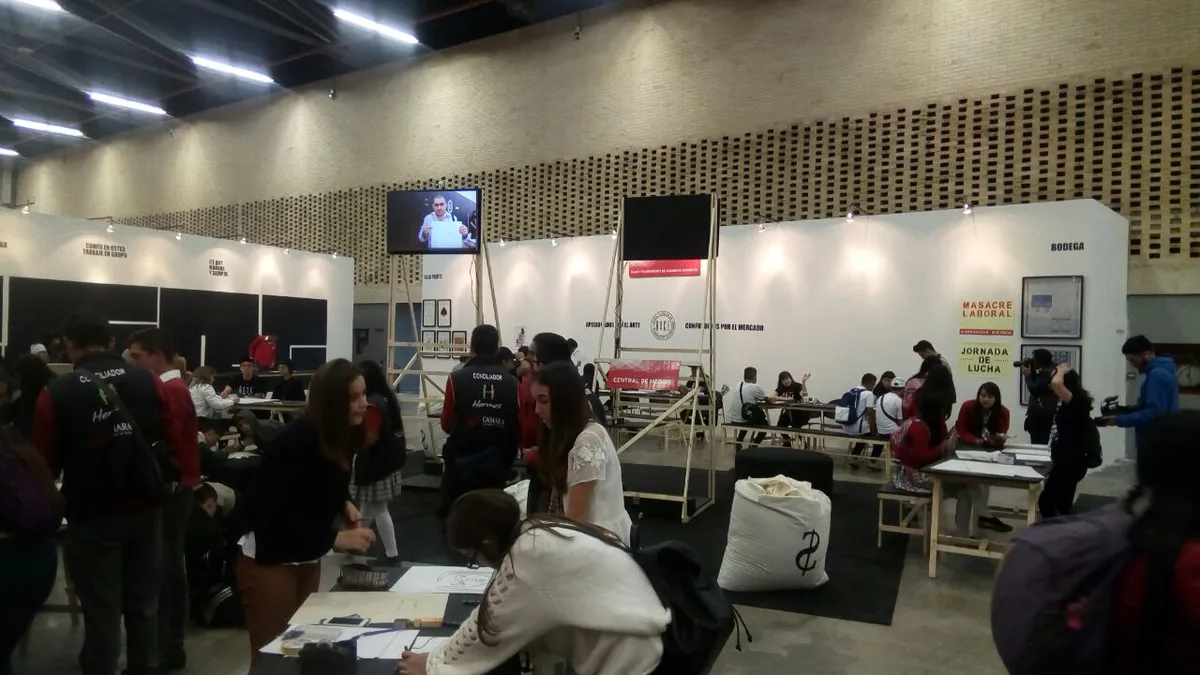
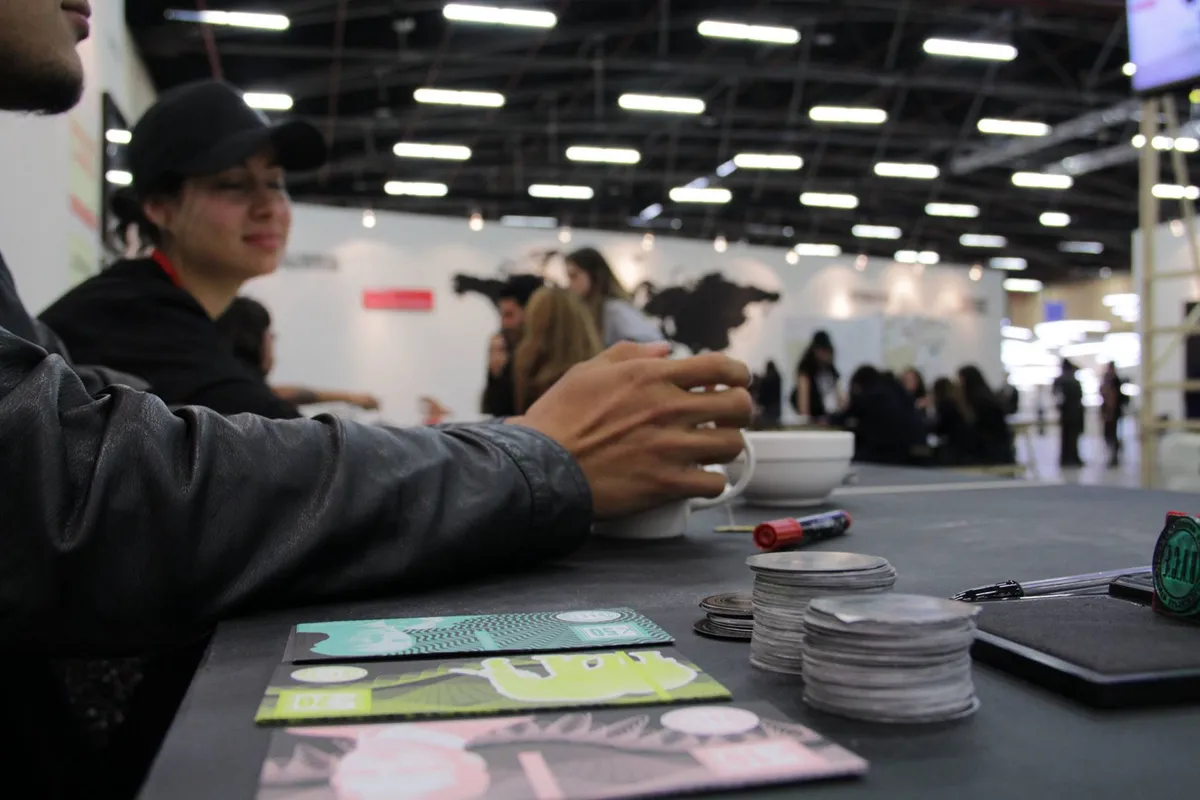
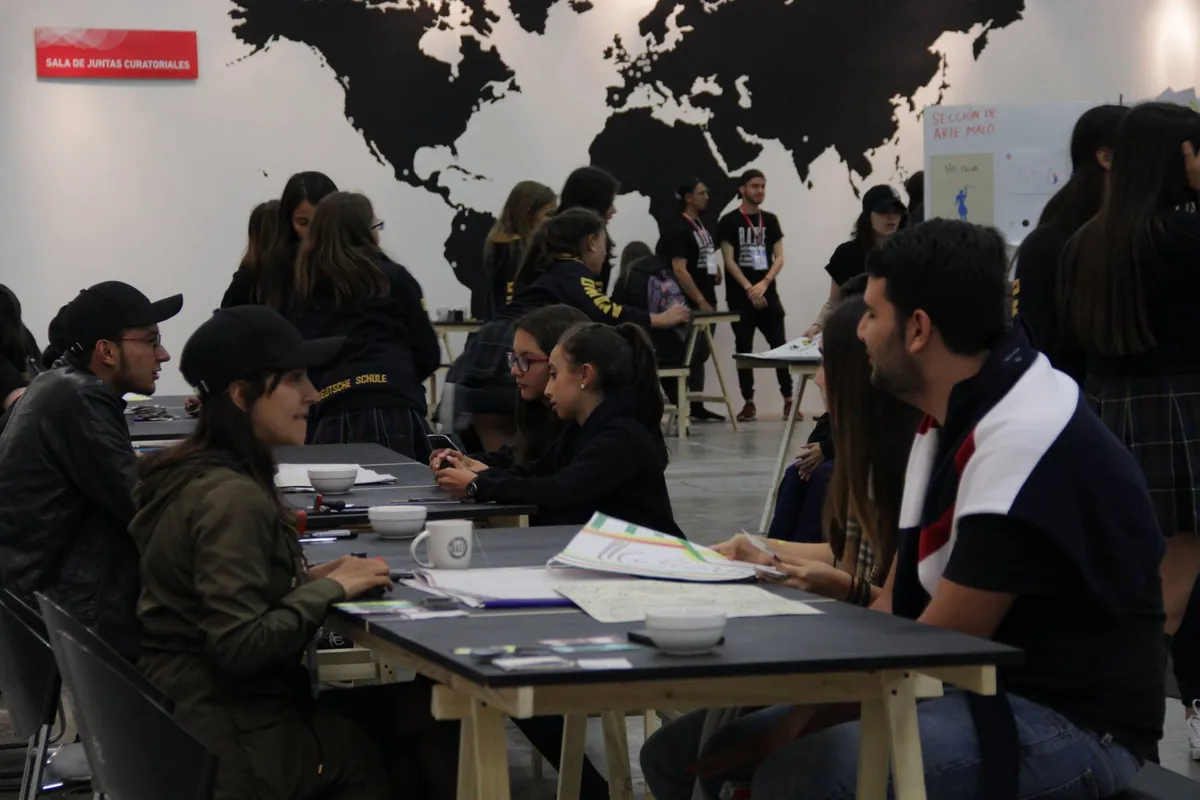
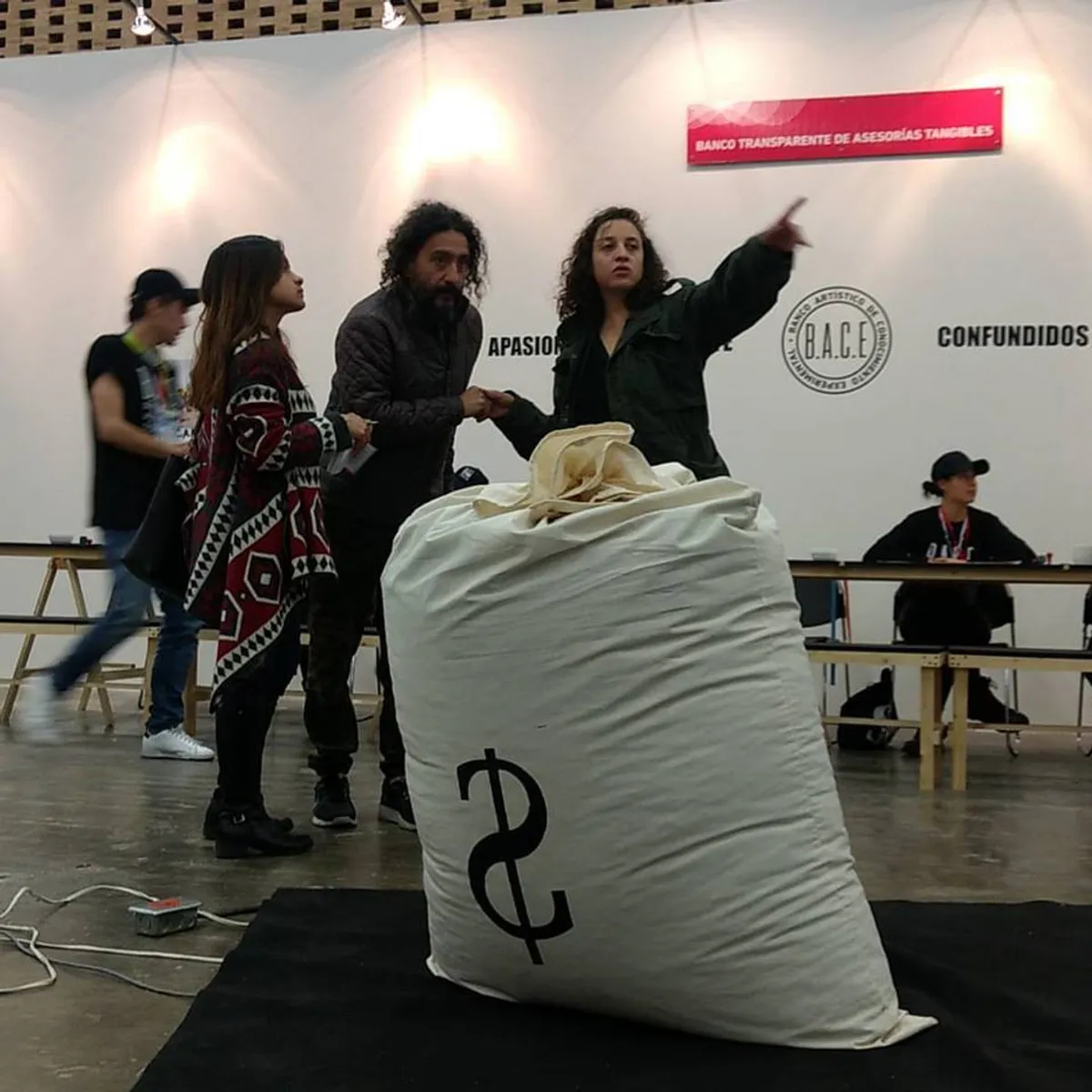

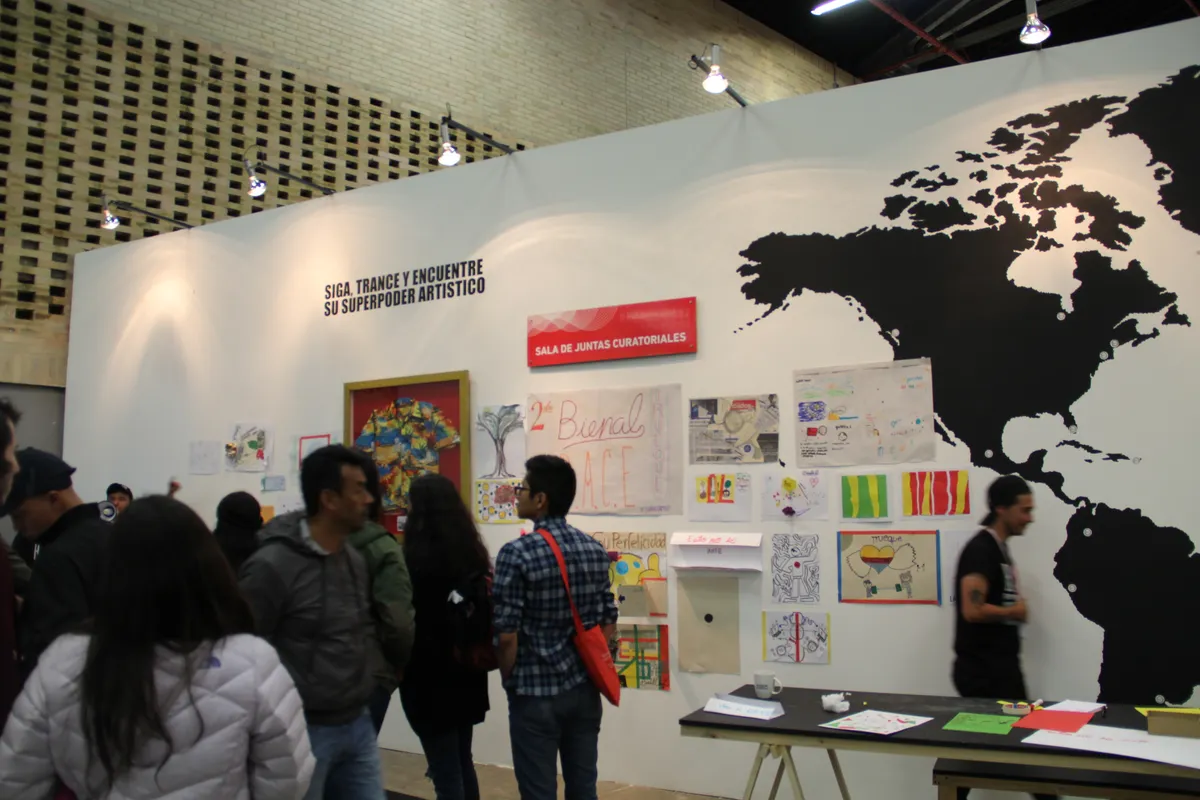
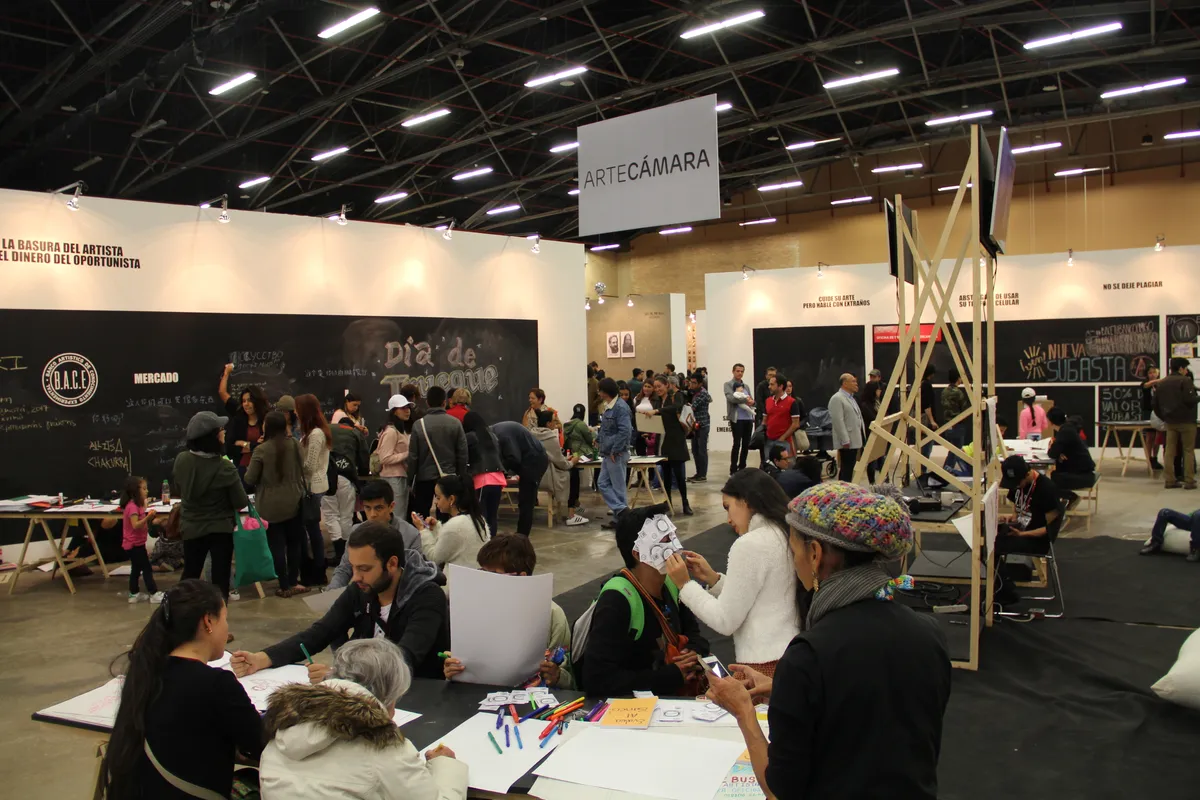
¿Qué experiencia pedagógica puede existir en una feria de arte? No ignoremos el hecho de que se trata de un espacio donde se juegan dinámicas propias al mercado del arte. Dicha constatación no implica que la experiencia del mercado tenga que ceñirse a la definición capitalista del mismo. No creemos que una feria tenga que ser el playground de la especulación: queremos abordar la posibilidad de abrir el campo de visión a formas de experimentación que subvierten estos a prioris. Si ARTBO abre un espacio donde existen modelos horizontales de pedagogía, la feria se separa de las jerarquías cerradas del modelo de mercado tradicional, abriéndose a la experimentación con formas de intercambio no piramidales. El reto es separar el término “economía” del término “capitalismo”. B.A.C.E es un lugar que articula al público para que éste pueda devenir en un sujeto crítico que entiende que los sistemas de valoración no lo someten sino que dependen de él. En una era donde los límites ideológicos son cada vez más volátiles, aportamos algunas herramientas para que la gente se empodere y navegue en un mundo que exige estados de adaptación constante. Esta dinámica no será producida desde una dialéctica de la oposición, sino desde un espacio que acepta que un campo abierto pierde la necesidad de dominación de una idea sobre otra.
La feria es un fenómeno local y de temporalidad limitada. Esto permite la emergencia de un contexto para probar formas, modelos y formatos de creación e intercambios autónomos y colectivos. Nos inspiramos en la teoría de las Zonas Autónomas Temporales de Hakim Bey: áreas que han sido liberadas para que los que están en ellas experimenten con nuevas formas de estar juntos, re-apropiándose de la posibilidad de ser los creadores del arte de la vida cotidiana. El espacio de B.A.C.E al interior de la feria es impermanente, posee sus propias reglas, y cuenta con la participación de una comunidad reducida, en comparación con la población total de la ciudad. Creemos que se trata de un lugar propicio para crear un lenguaje compartido, que permita la aplicación de la teoría de Bey ¿Qué pasa si en un espacio de temporalidad reducida emergen las condiciones para fomentar la creación de formas horizontales y autogestionadas de intercambio, con una moneda alternativa cuyo valor de uso tiene sentido sólo al interior de B.A.C.E? La producción de esta moneda no es un acto de rebeldía, es una apertura a las posibilidades de acción dentro de un entorno de producción simbólica.
La sociedad industrializada ha relegado la tarea de la representación del valor a dos actores: los banqueros y los artistas. Estos oficios parecen existir en ámbitos disociados, pero crean semióticas que permiten el canje dentro de una esfera que supera lo inmediatamente tangible. Imaginan y presentan futuros, para bien o para mal. El mercado del arte depende de una liquidez monetaria que supera las necesidades básicas de supervivencia, además los primeros coleccionistas son banqueros. A partir de estas consideraciones surge B.A.C.E: un espacio que visibiliza y da elementos de análisis para que los participantes retomen su poder transformativo sobre los sistemas de valuación, es decir, sobre los modos de producción, circulación y consumo del arte.
Después de la crisis financiera del 2008, los bancos y monedas alternativas creadas por artistas se han convertido en una estrategia que permite denunciar las falencias del mercado financiero del capitalismo actual; generando un lugar de intercambio local, que no reproduce las dinámicas de la economía global. Usa la micropolítica de los cambalaches entre humanos; creando amistades, colaboraciones y alianzas de ideas.
B.A.C.E es un espacio de exaltamiento y no de angustia, donde se devuelve al participante su agencia, haciendo que las dinámicas de valuación y evaluación dependan de un diálogo interpersonal. El modelo propuesto crea dinámicas de mercado que no dependen de una moneda única, sino de la capacidad de producir situaciones de CANJE. B.A.C.E es un lugar “alternativo” en la feria, en esa posición no debe sólo presentar, sino proporcionar herramientas para construir múltiples maneras de relacionarse y convivir.
Proyecto de LSZ (Paulo Licona, María Adelaida Samper, Gabriel Zea)
What pedagogical experience can exist in an art fair? Let's not ignore the fact that it is a space where the dynamics of the art market are at play. This that the experience of the market does not imply that it has to adhere to the capitalist definition of it. capitalist definition of it. We do not believe that a fair has to be the playground of speculation. speculation: we want to address the possibility of opening the field of vision to forms of experimentation that subvert these aforementioned avenues. experimentation that subvert these a prioris. If ARTBO opens a space where horizontal models of pedagogy horizontal models of pedagogy, the fair separates itself from the closed hierarchies of the traditional market model, opening itself to the market model, opening itself to experimentation with non-pyramidal forms of exchange. pyramidal forms of exchange. The challenge is to separate the term "economy" from the term "capitalism". B.A.C.E. is a place that articulates the public so that they can become a critical subject who understands that the systems of valuation do not subjugate him but depend on him. At in an era where ideological boundaries are increasingly volatile, we provide some tools for people to empower tools for people to empower themselves and navigate in a world that demands states of constant adaptation. constant adaptation. This dynamic will not be produced from a dialectic of opposition, but from a space that accepts that an open field loses the need for domination of one idea over another. of one idea over another.
The fair is a local phenomenon of limited temporality. This allows the emergence of a context to test forms, models and formats of creation and autonomous and collective exchanges. exchanges. We are inspired by Hakim Bey's theory of Temporary Autonomous Zones: areas that have been liberated for those who are in them to experiment with new ways of being together, re-appropriating and re-appropriating ways of being together, re-appropriating the possibility of being the creators of the art of everyday life. everyday life. The B.A.C.E. space inside the fair is impermanent, it has its own rules, and it counts on the participation rules, and counts on the participation of a reduced community, in comparison with the total population of the city. compared to the total population of the city. We believe that this is an appropriate place to create a shared language that allows the shared language, which allows the application of Bey's theory. space of reduced temporality, the conditions emerge to foster the creation of horizontal and self-managed horizontal and self-managed forms of exchange, with an alternative currency whose use-value has meaning only within the whose use value makes sense only within B.A.C.E.? The production of this currency is not an act of rebellion, it is an opening to the possibilities of action within an environment of symbolic production. symbolic production.
Industrialized society has relegated the task of the representation of value to two actors: Bankers and artists. These professions seem to exist in dissociated spheres, but they create semiotics that allow the semiotics that allow for exchange within a sphere beyond the immediately tangible. tangible. They imagine and present futures, for better or worse. The art market depends on a monetary liquidity that exceeds the basic needs of survival, and the first collectors are bankers. collectors are bankers. From these considerations arises B.A.C.E.: a space that makes visible and gives space that makes visible and provides elements of analysis so that the participants can retake their transformative power on the their transformative power over the systems of valuation, that is, over the modes of production, circulation and consumption of art. production, circulation and consumption of art.
After the financial crisis of 2008, alternative banks and currencies created by artists have become a strategy that have become a strategy to denounce the shortcomings of the current capitalist financial market. financial market of current capitalism; generating a place of local exchange, which does not reproduce the dynamics of the reproduces the dynamics of the global economy. It uses the micropolitics of the exchanges between humans between humans; creating friendships, collaborations and alliances of ideas.
B.A.C.E. is a space of exaltation and not of anguish, where the participant's agency is given back to him/her. agency, making the dynamics of assessment and evaluation dependent on interpersonal dialogue. interpersonal dialogue. The proposed model creates market dynamics that do not depend on a single currency, but on the on a single currency, but on the ability to produce barter situations. B.A.C.E. is an "alternative" place at the fair, in the "alternative" place at the fair, in that position it should not only present, but also provide tools to build tools to build multiple ways of relating and living together.
Project by LSZ (Paulo Licona, María Adelaida Samper, Gabriel Zea).